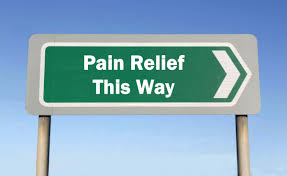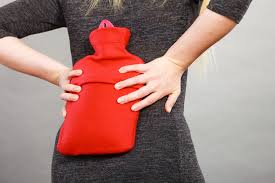Should I use hot or cold to help with pain (or both….or neither?)
 Don’t fancy reading the whole article? Our advice is summarised in here;
Don’t fancy reading the whole article? Our advice is summarised in here;
Cold is best when;
- If the pain is recent and/or sharp and/or has some swelling and redness in the area then ice may help while being applied to the area.
- Wrap the cold compress (bag of frozen peas, ice etc) in a protective barrier (eg, a tea towel) and apply for 15-20 mins every 2/3 hrs
- Wet ice is more effective than crushed ice on an injured area.
- The application will reduce pain but will not speed up healing, best to act according to your goals.
Heat is best when;
- If the pain is more longstanding, feels very stiff and tight and has not been due to a recent trauma then heat may help the area have less pain and recover faster.
- Heat can be applied through many sources, either local or general (hot water bottle, bath, sauna etc).
- No real evidence on duration or frequency of application but consideration must be given to potential damage to the skin.
(1, 2, 3)
If you want to know why then read on….
DISCLAIMER – If you are unsure what is causing your pain or it is either not getting better, or even worsening then we always recommend getting a consultation with a medical professional (osteopath, GP etc).
Most people know that putting heat or a cold compress on a sore area of the body can help with pain, but which should you use? Why would you do either? Should you use both, or neither?
As per usual the answer on which is better is ‘it depends’. Mainly it depends on what kind of pain you have, how long you have been experiencing it and what you are trying to achieve.
As a general rule, if your pain is recent, sharp and stingy (acute pain) then a cold compress of some kind is usually better. If the pain you have is dull, diffuse, and stiff then putting heat on it is usually considered better. Why is this? To explain that we have to delve into the wonderful world of inflammation and how the body reacts to pain and injury.
%22%20transform%3D%22translate(.5%20.5)%20scale(1.07422)%22%20fill-opacity%3D%22.5%22%3E%3Cellipse%20fill%3D%22%23fff%22%20cx%3D%2231%22%20cy%3D%2281%22%20rx%3D%2244%22%20ry%3D%22255%22%2F%3E%3Cellipse%20fill%3D%22%23c26e31%22%20rx%3D%221%22%20ry%3D%221%22%20transform%3D%22rotate(-179.8%20106%2038.8)%20scale(81.73601%20217.51959)%22%2F%3E%3Cpath%20fill%3D%22%23fff%22%20d%3D%22M94%20185L7-16l-23%20181z%22%2F%3E%3Cellipse%20fill%3D%22%237f809a%22%20rx%3D%221%22%20ry%3D%221%22%20transform%3D%22matrix(28.68302%20-15.12284%2019.3853%2036.76748%2086.4%20103)%22%2F%3E%3C%2Fg%3E%3C%2Fsvg%3E) Acute Pain and Ice
Acute Pain and Ice
When there is tissue damage, say to a muscle or ligament the body begins a series of events that are summarised as acute inflammation. Firstly the blood vessels in the area dilate enabling blood to get to the injured area (making it appear red), and cells to migrate from the blood vessels into the injured area (making it swell). Some of the cells that end up in the injured area are pain sensitizing to the nerves in the area which is why you experience pain in the damaged tissues (and why the pain is not always immediate). This phase can last for anything up to 3 days.
You may have noticed that if you have an acute injury then the area is hot to the touch, this is due to the increased blood flow to the area and the chemical reactions happening at great speed in the injured area. So, that may give you a clue as to why the application of something cold to the area will reduce the pain. When you apply a cold compress the body’s nervous system reacts as it would when you stand out in the cold but in a more localised way, basically it constricts all the blood vessels in the locality, this slows the delivery of the inflammatory chemicals to the area reducing the swelling and pain (the same effect by a different method that is going on when you take anti-inflammatory medication) (1).
So, the application of cold will reduce the inflammatory process in the damaged area and reduce pain, but do you want to do this in all cases? Less pain is obviously a good thing, however it will slow the process down, the latest recommendations for the management of ankle sprains include the advice that delaying the inflammatory response may result in increased healing time, (4).
%22%20transform%3D%22translate(.5%20.5)%20scale(1.07422)%22%20fill-opacity%3D%22.5%22%3E%3Cellipse%20fill%3D%22%23ceefef%22%20cx%3D%22243%22%20cy%3D%2276%22%20rx%3D%2280%22%20ry%3D%2280%22%2F%3E%3Cellipse%20fill%3D%22%23a01a0e%22%20cx%3D%2298%22%20cy%3D%22169%22%20rx%3D%2246%22%20ry%3D%22210%22%2F%3E%3Cellipse%20fill%3D%22%23212032%22%20rx%3D%221%22%20ry%3D%221%22%20transform%3D%22matrix(-9.06444%20-34.40392%2064.32162%20-16.9469%20117.5%20162)%22%2F%3E%3Cellipse%20fill%3D%22%233e4354%22%20rx%3D%221%22%20ry%3D%221%22%20transform%3D%22matrix(103.70823%202.52278%20-.61684%2025.35754%2078%206)%22%2F%3E%3C%2Fg%3E%3C%2Fsvg%3E) Heat and Acute/Chronic Pain
Heat and Acute/Chronic Pain
Once the acute phase of inflammation is over there is a tissue rebuilding period where the body has removed the damaged tissue and begun to lay down new tissues. In the case of muscle strains and other soft tissue injuries the body will lay down scar tissue which builds up a fibrous mesh around the damage to eventually form new tissues. This process results in a feeling of stiffness, but with less pain. At this point (as the pain sensitizing chemicals are no longer present) it is beneficial to increase the blood flow to the area in order to speed up the delivery of oxygen and other nutrients vital to the resolution of the injury. It is also thought that the application of heat affects the pliability of the scar and surrounding tissues which makes them feel more pliable (1).
These effects make heat packs productive when there is a lot of stiffness in muscles or when there is osteoarthritic stiffness in a joint. Both of these effects are greater if combined with appropriate exercise for the affected area.
There are some instance where these general guidelines may not apply, such as icing an area if you are already shivering (hypothermic), or heating when you are already sweating (infection, fever etc). Sometimes choosing the right option is not easy, so if you try one and it is not helpful, try the other (5)!
Do you want to know what is causing your pain and if we can help? Why not take advantage of our new patient assessment introductory offer to get you started towards a tailor made recovery plan for only £19.
Are you in a lot of pain and want to get better as soon as possible? If so then why not book in for a new patient consultation, with treatment on the day, for £72.
We are also there to help you from home. Take a look at our suite of exercise resources and advice sheets which you can easily download and use from home.
References
1 – Malanga GA, Yan N, Stark J (2015). Mechanisms and efficacy of heat and cold therapies for musculoskeletal injury. Post Grad Med, Jan;127(1):57-65. Epub 2014 Dec 15.
2 – NHS (2018). Sports injuries. Available at, https://www.nhs.uk/conditions/sports-injuries/treatment/
3 – French SD, Cameron M, Walker BF, Reggars JW, Esterman AJ (2010). Superficial heat or cold for low back pain (Review). Available at, https://www.researchgate.net/publication/37376966_Superficial_heat_or_co… [accessed Feb 12 2019]
4 – Zuurberg G, Hoorntje A, Wink LM, et al. (2018). Diagnosis, treatment and prevention of ankle sprains: updae of an evidence-based clinical guideline, Br J Sports Med;52:956.

 Acute Pain and Ice
Acute Pain and Ice Heat and Acute/Chronic Pain
Heat and Acute/Chronic Pain